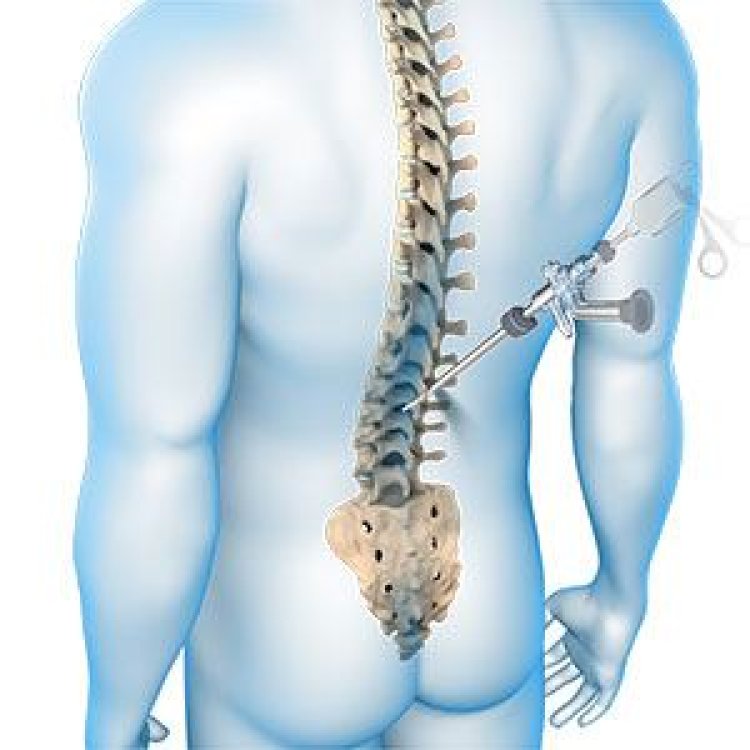How Serious is Spinal Decompression Surgery?
Discover the seriousness of spinal decompression surgery, including its benefits, risks, and recovery process. Learn how consulting with the best neurosurgeons in Mumbai can enhance your treatment outcomes and overall quality of life.
Share this Post to earn Money ( Upto ₹100 per 1000 Views )

Spinal decompression surgery is a medical procedure designed to alleviate pressure on the spinal cord or nerves by removing or reducing the source of compression. This type of surgery is often recommended for individuals experiencing significant pain, numbness, weakness, or other neurological symptoms due to spinal conditions such as herniated discs, spinal stenosis, or degenerative disc disease. While spinal decompression surgery can offer substantial relief and improve quality of life, it is essential to understand its seriousness, potential risks, and benefits. For optimal outcomes, consulting with the best neurosurgeons in mumbai can provide expert guidance and advanced surgical care.
Understanding Spinal Decompression Surgery
Spinal decompression surgery aims to relieve pressure on the spinal cord or nerve roots by addressing the underlying cause of compression. The procedure can involve several techniques, including:
-
Laminectomy: Removal of a portion of the vertebra (the lamina) to create more space for the spinal cord and nerves.
-
Discectomy: Removal of herniated or degenerated disc material that is pressing on the spinal cord or nerves.
-
Foraminotomy: Enlargement of the foramina (the openings through which nerve roots exit the spinal column) to relieve pressure on compressed nerves.
-
Corpectomy: Removal of a portion of the vertebra and adjacent disc material to relieve severe compression.
Why is Spinal Decompression Surgery Considered Serious?
-
Invasiveness: Spinal decompression surgery is considered a major surgical procedure, which involves significant intervention compared to non-surgical treatments like physical therapy or medication. It requires careful planning, precise execution, and often, a longer recovery time.
-
Anesthesia Risks: The surgery requires general anesthesia, which carries risks such as allergic reactions, respiratory complications, and cardiovascular issues.
-
Potential for Complications: As with any major surgery, there are risks of complications, including infection, bleeding, blood clots, and adverse reactions to anesthesia.
-
Neurological Risks: There is a risk of neurological complications, including nerve damage, which could potentially worsen symptoms or cause new issues, such as weakness or sensory changes.
-
Long Recovery Period: Recovery from spinal decompression surgery can be lengthy, involving a period of limited mobility, pain management, and physical therapy to regain strength and functionality.
-
Potential for Recurrent Issues: While the surgery aims to address the current problem, there is a possibility that new issues may develop, or that the original problem could recur, necessitating further treatment.
Benefits of Spinal Decompression Surgery
Despite its seriousness, spinal decompression surgery offers several significant benefits:
-
Pain Relief: The primary goal of the surgery is to relieve pain caused by pressure on the spinal cord or nerves, leading to substantial improvement in symptoms.
-
Improved Function: By alleviating pressure on the nerves, the surgery can restore mobility and strength, improving overall functional abilities.
-
Enhanced Quality of Life: Successful surgery can greatly enhance quality of life by reducing pain, improving movement, and enabling individuals to return to their daily activities.
-
Minimally Invasive Options: Advances in surgical techniques have led to minimally invasive options that can reduce recovery time and postoperative discomfort.
What to Expect During Recovery
The recovery process following spinal decompression surgery involves several stages:
-
Hospital Stay: The length of the hospital stay varies but is typically a few days. During this time, patients are monitored for any immediate complications and receive pain management and supportive care.
-
Pain Management: Pain and discomfort are common post-surgery and are managed through medication, physical therapy, and other supportive measures.
-
Physical Therapy: Rehabilitation through physical therapy is crucial for regaining strength, mobility, and functionality. A tailored exercise program helps improve recovery outcomes.
-
Activity Restrictions: Patients are advised to avoid heavy lifting and strenuous activities for a period to ensure proper healing and prevent complications.
-
Follow-Up Care: Regular follow-up appointments are essential to monitor progress, assess surgical outcomes, and address any concerns that may arise.
Conclusion
Spinal decompression surgery is a serious and complex procedure with potential risks and benefits. Understanding the seriousness of the surgery, along with its potential complications and advantages, helps patients make informed decisions about their treatment options. While the procedure offers substantial benefits, including pain relief and improved function, it is essential to approach it with a clear understanding of the potential risks and a commitment to a comprehensive recovery plan. By working closely with healthcare providers and adhering to recommended postoperative care, patients can maximize the benefits of spinal decompression surgery and improve their overall quality of life.













